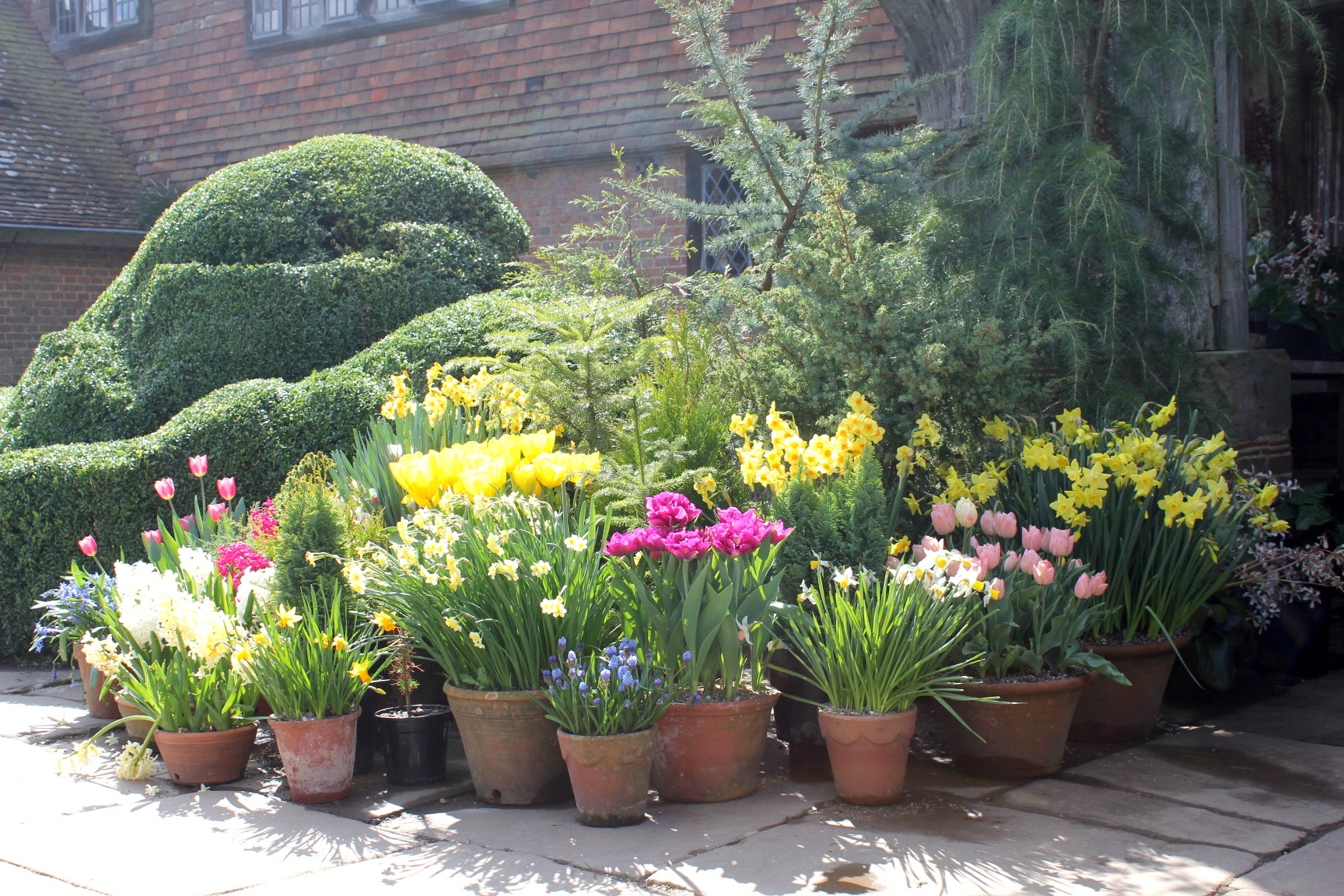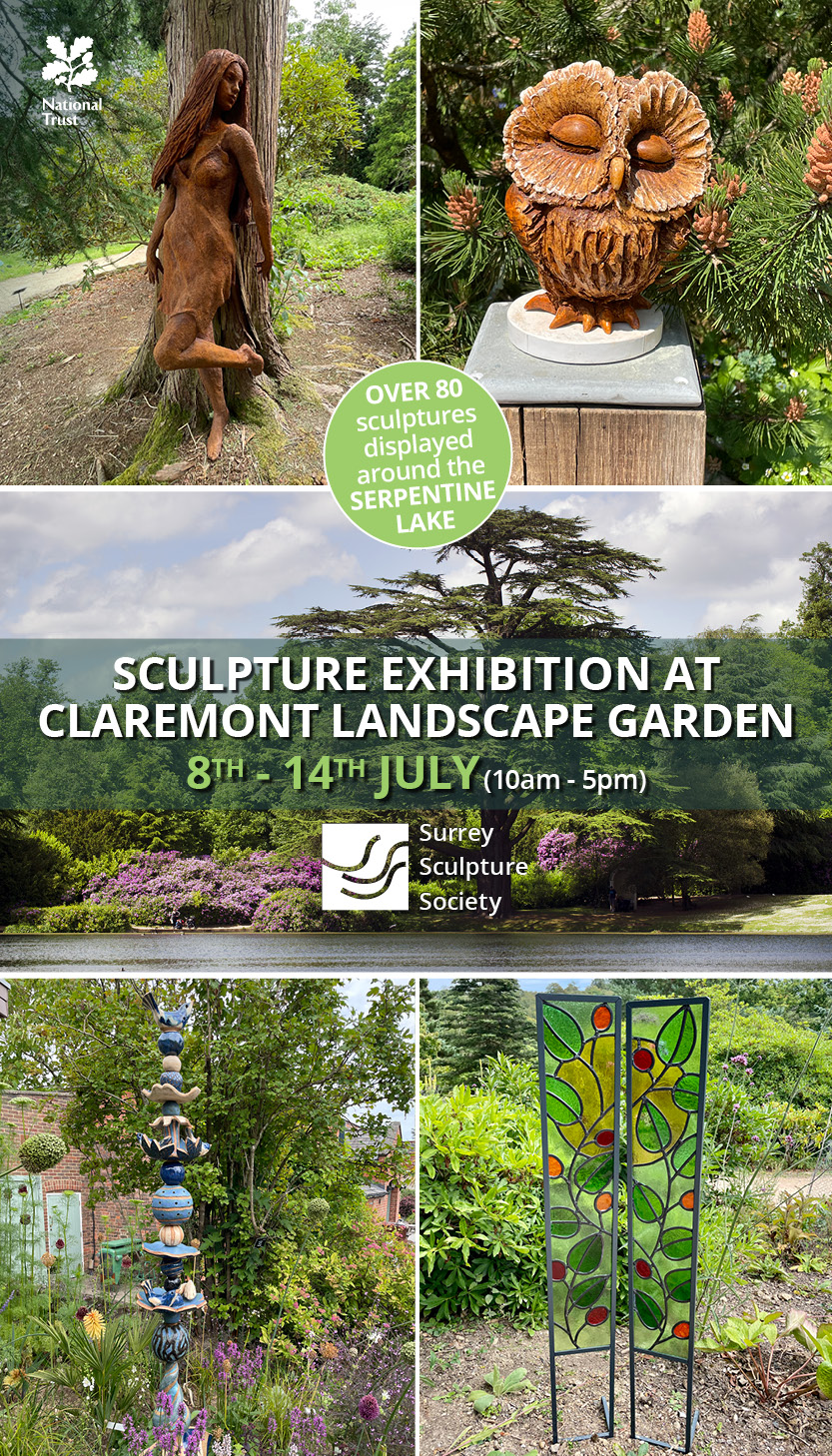I often use potted versions of designs and ideas that I’m planning for bigger spaces to see how the plants get on together. More often than not my pot plants are impulse purchases – bought in haste when life (that thing that gets in the way of gardening) happens and the big plans haven’t materialised. It is handy to be able to wheel out some pots of distraction to act as focal points and provide splashes of colour to divert the eye.
Designing with containers
Container style… There are so many things to use as containers for plants – from wellie boots to huge stone troughs, the choice can be bewildering. You can choose containers that blend with the materials used in the construction of your house, terracotta, zinc or wooden planters perhaps, or do the opposite and make a contrast. Pots in a single style are effective and will tie a design together, but a relaxed and informal mingling of styles can look just as attractive. It’s hard to beat the simplicity and functionality of a terracotta pot.
Focal points… Use large or architectural containers to make a bold statement and give a planting scheme impact. Big pots can look dramatic filled with just one large plant, or even a small tree. Striking architectural plants like Phormium, Fatsia, Bamboo, or a large box ball make good ‘statement’ plants. Climbers on supports can be used to bring height.
Colour impact… Bright colours will attract attention, but using a limited range of colours, or repeating a single colour will help to unite a scheme together. A jumble of annuals, perennials and herbs will give a relaxed, cottage style, whereas a cool, calm collection of single coloured flowers and tidy foliage will bring a more restrained and formal look to an area.
Pots with a purpose
Seasonal colour… Planting pots with short-lived bulbs, annuals and bedding is a familiar way to bring seasonal interest. The advantage is that once the current season’s flowers fade, they can be replaced with a new display. Bulbs can be lifted and kept until the following year, but it is harder to look after tender bedding plants through the seasons, as these must be kept frost-free.
Crops for pots… Some vegetables can be successfully grown in pots and containers. Short, or round carrots, beetroot, radish, peppers, cherry tomatoes and most herbs will happily grow in containers; in fact a mixture of herbs and dwarf vegetables in a container or even a hanging basket can look fantastic – and taste even better.
Planting and maintaining
How to plant… If you are growing permanent plants in containers, put some crocks (broken bits of pot, stones or even the polystyrene that some plants are sold in) in the bottom of the pot to provide drainage. Add compost on top of the drainage layer, then carefully remove the plants from their original pots and check the roots, teasing them out if the root ball looks congested. Plant and back fill with compost to the same height as the plant was in the original pot (climbers can be planted deeper). Water well.
Compost… Seasonal bedding plants and tender annuals will be happy with a multi-purpose compost for a short time, providing you don’t let the compost dry out – if that does happen you may need to soak the whole pot in water for a while, as it is hard to re-wet. Most composts for containers have a six week supply of fertiliser added, but do supplement this if you want the display to continue for the whole season. Permanent plantings will need a more substantial, soil-based compost. You can buy this (John Innes no. 3 is a good one), or mix up your own using garden soil and either homemade, weed-free compost, or shop bought.
Prisoners on parade… Remember that a plant in a pot is entirely dependent on your care – some plants will manage to limp along with just a glance every now and then, but others need to be treated like fussy old aunts. You probably know what kind of nurturer you are by now and how much time you can devote to your captives, so plant accordingly. Most permanently potted perennials and shrubs will need feeding in the spring; a slow release fertiliser is useful here, rather than a swamping of food and then nothing until the following year. Some plants will need repotting every year or so, or at least top dressing (removing some of the compost from the top of the pot and replacing it with fresh). All plants need water in the summer – and there’s always a heat wave back home when you’re on holiday, so it pays to take precautions.
Winter care… You may need to bring tender plants into a sheltered area or greenhouse in the winter, or surround pots with some insulation (bubble-wrap can work well, but isn’t the most attractive patio adornment). Water-logging kills more plants than anything else during the winter, so good drainage becomes essential, especially for plants like lavender that don’t like to get their feet too wet.
From tiny alpines and succulents to huge potted trees, from permanent plantings to ephemeral flashes of colour, there is a selection of plants that’s just waiting to be planted up in a container somewhere in your garden. The choice is vast – and very tempting. Let’s get out there and fill some pots.
TEST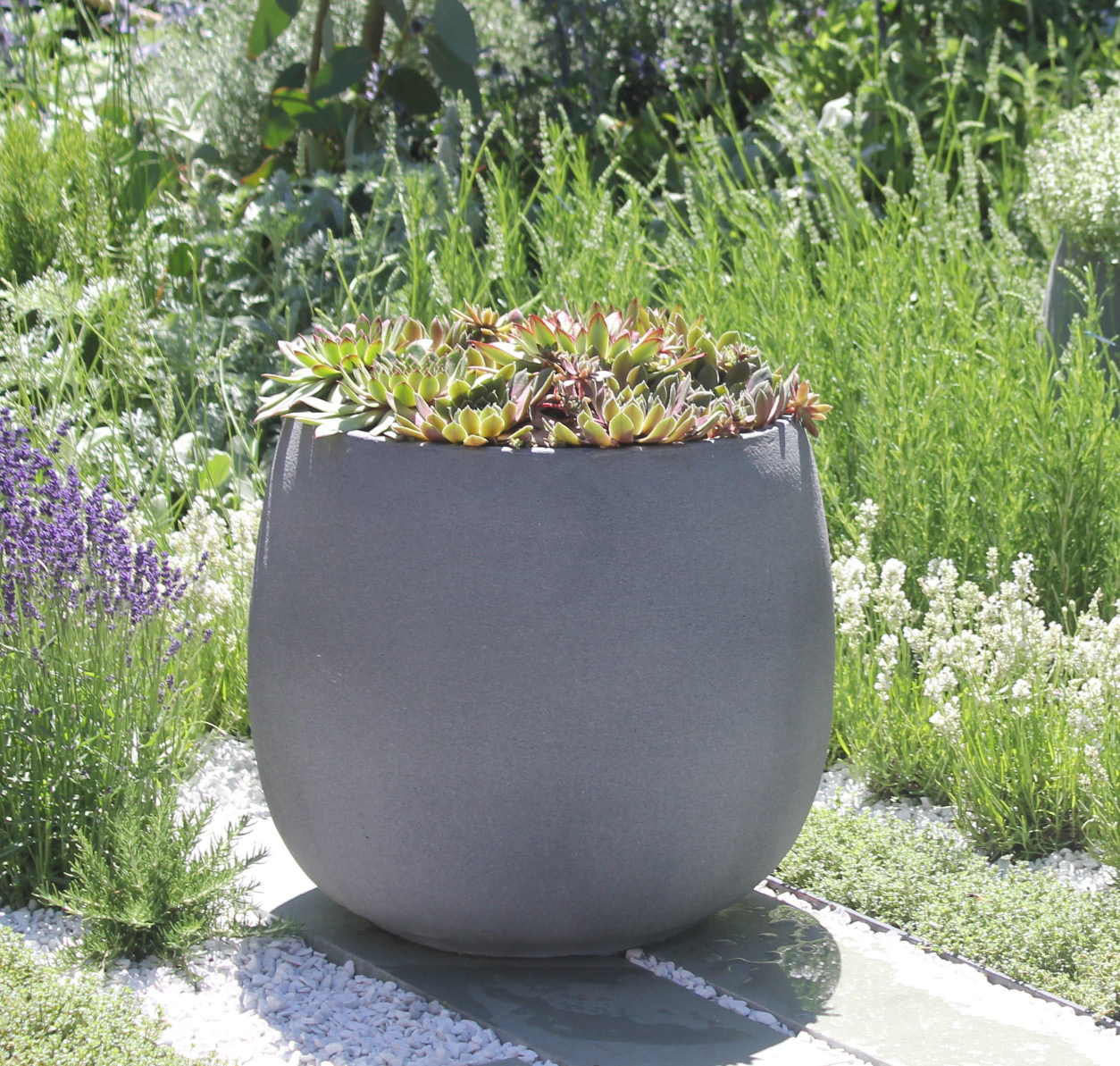
From tiny alpines and succulents to huge potted trees, from permanent plantings to ephemeral flashes of colour, there is a selection of plants that’s just waiting to be planted up in a container somewhere in your garden
TEST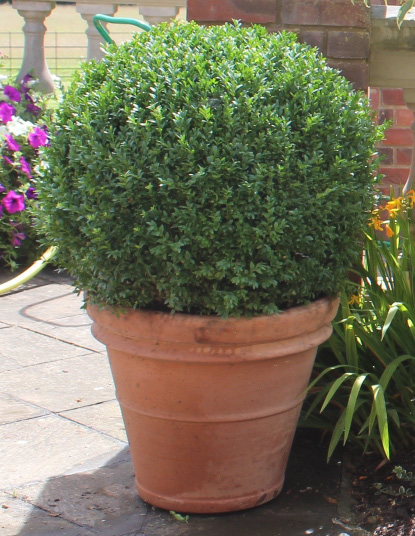
Pots can be repositioned throughout the year
TEST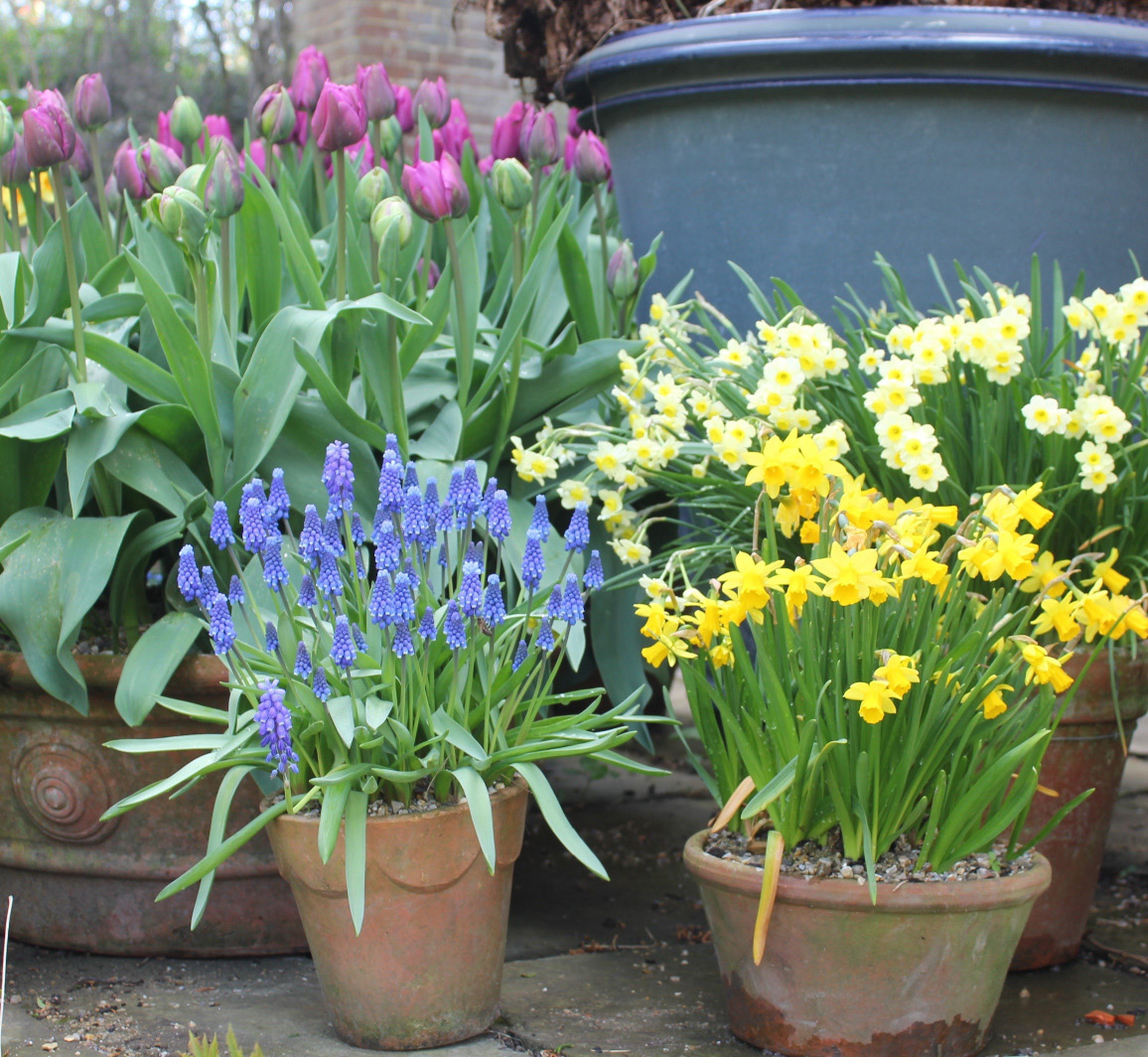
A jumble of annuals, perennials and herbs will give a relaxed, cottage style
TEST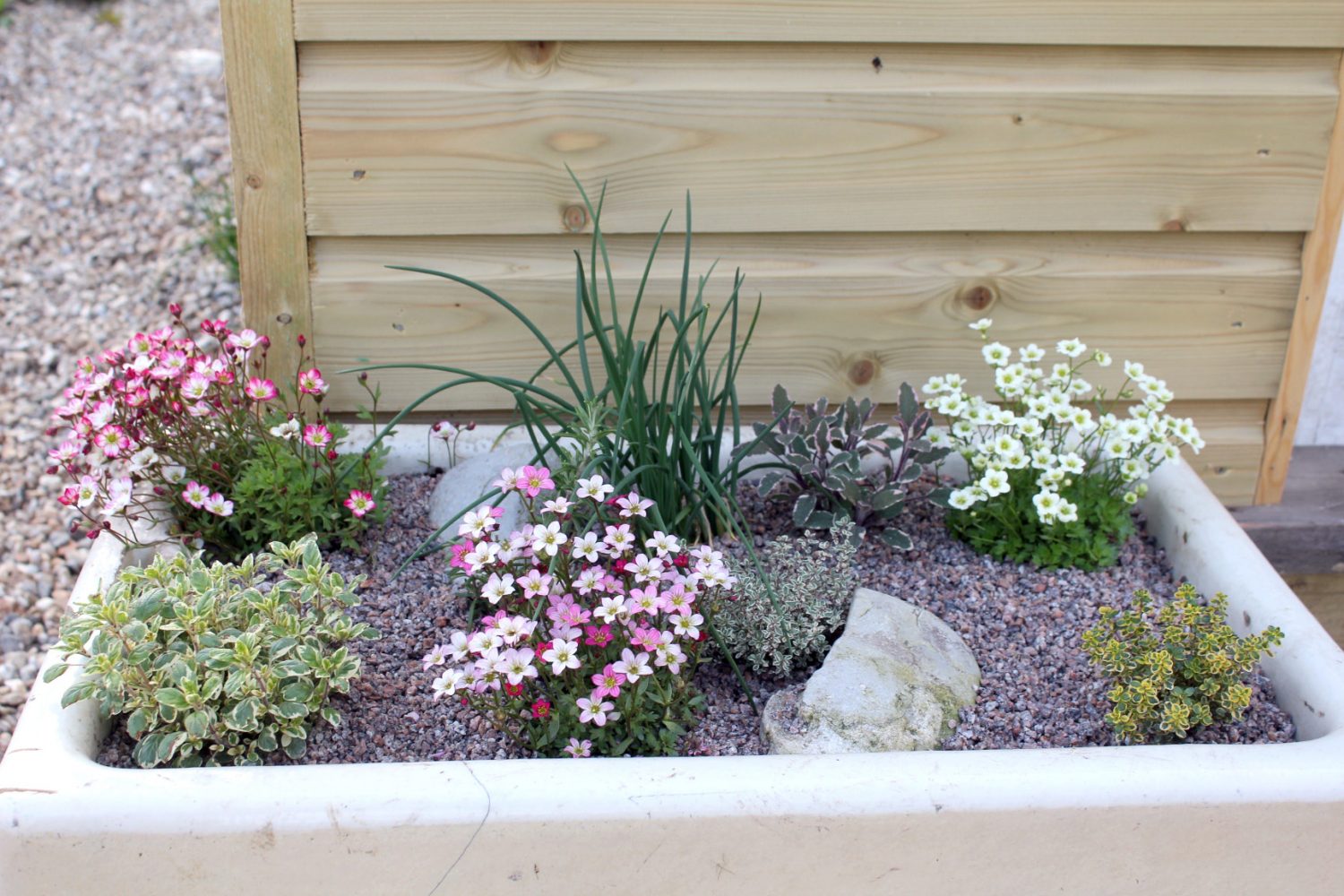
A butler's sink makes a great container for alpines or herbs
TEST
Terracotta pots look great against a black background. Here, shelves have been up-cycled to enhance a redbrick garden wall
TEST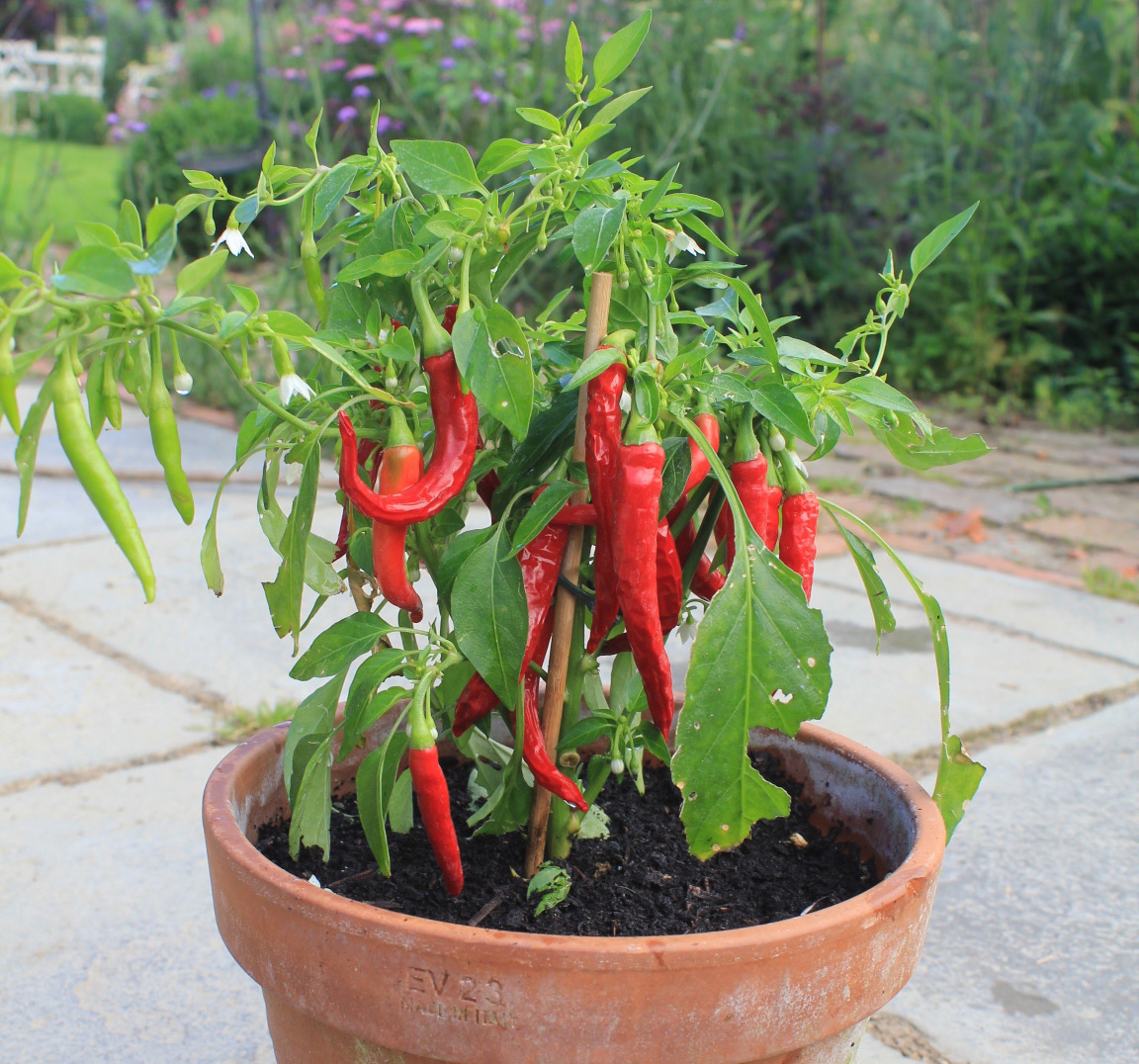
Grow your own chillies and herbs
- words: Jo Arnell
You may also like
Go with the Flow
Sue Whigham shares some valuable new-to-gardening advice I’m sure that by now we should be used to the rain but I’m not entirely sure that we are. We had a dry, sunny day the other day and how everybody’s mood...
Farm Fables
Jane Howard gets to the bottom of why so many ponds have disappeared across the High Weald I have a new passion, almost an obsession, it’s about ponds. And there’s a distinct possibility I might become a bit of a...
Hedge Issues
Sue Whigham takes a meander along nature’s verdant and vital corridors Recently the BBC’s Today programme carried a feature about England’s hedgerows which created a lot of interest among listeners. On the strength of that, Martha Kearney interviewed one of...
